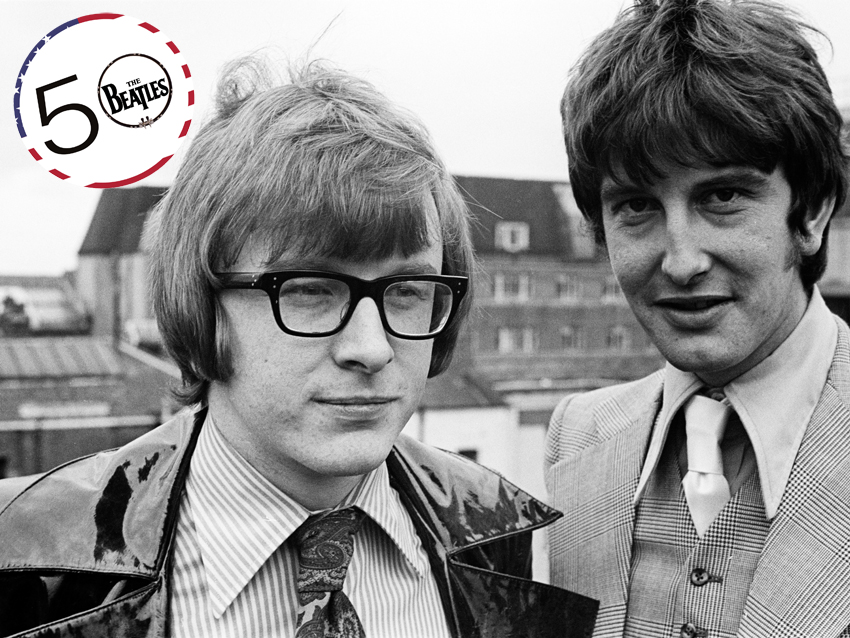
Peter Asher: my five favourite Beatles songs of all time
THE BEATLES IN THE USA: As one-half of the '60s duo Peter And Gordon (whose first hit, A World Without Love, was written by Paul McCartney), and later as the head of A&R for Apple Records, Peter Asher witnessed firsthand the phenomenon of Beatlemania, which hit the UK like a bolt from the blue in 1963 and exploded globally after the band's historic appearance in America on The Ed Sullivan Show on February 9th, 1964.
“I was in Britain when The Beatles played Ed Sullivan, so at the time I, like everybody else, could only see it through the eyes of the UK press," Asher says. "The Brits love that kind of thing. Whenever a British star wins an Oscar, it’s like ‘Brits Sweep Oscars!’ So we’re always ready to celebrate and be patriotic. But The Beatles going to the States seemed a little different; it was a very big deal to us in England."
In addition to his professional relationship with The Beatles, Asher enjoyed a close friendship with the band – McCartney, in particular, who began dating Peter's actress sister, Jane, in 1963. “I was there when the band was told that I Want To Hold Your Hand had hit No. 1 in America," he says. "That was seismic. It’s inconceivable nowadays how unachievable that was at the time. Before then, the only British records to hit No. 1 in the States were things like Acker Bilk – novelty-ish songs."
As momentous as the achievement seemed, Asher says that nobody in the Beatles' camp anticipated the enormity of what lay ahead for the four mop-topped musicians in the US. "Suddenly in America you had radio stations giving the weather in ‘Beatle degrees' and things like that," he says. "Everything became The Beatles so fast. The whole country just fell in love with the band in the matter of a couple weeks. It was all quite stunning, really."
Once Peter And Gordon called it a day in 1967, Asher went to work for Apple Records. His keen eye for talent led him to sign a young singer-songwriter from America named James Taylor to the label. Several years later, he relocated to the States, where he managed and produced Taylor, along with Linda Ronstadt and a host of other successful artists. “It’s a tricky thing, trying to figure out how and why some artists hit and some don’t,” Asher says. “In the case of The Beatles, they were really one of those ‘perfect storm’ situations – the right songwriters, the right singers, the right musicians, the right characters. It all fit together into one perfectly amazing band. If any one aspect had outshone the others, it wouldn’t have worked. They got everything just right.”
Peter Asher will be participating in The Fest For Beatles Fans, which runs February 7 thru 9, at the Grand Hyatt Hotel in New York City. For tickets and more information, click here. (The night before The Fest For Beatles Fans, Asher and others will participate in an intimate conversation with "Friends of the Beatles" at the 92nd Street Y in New York City. Click here for tickets.)
On the following pages, Asher discusses his five favorite Beatles songs of all time, along with one bonus pick.
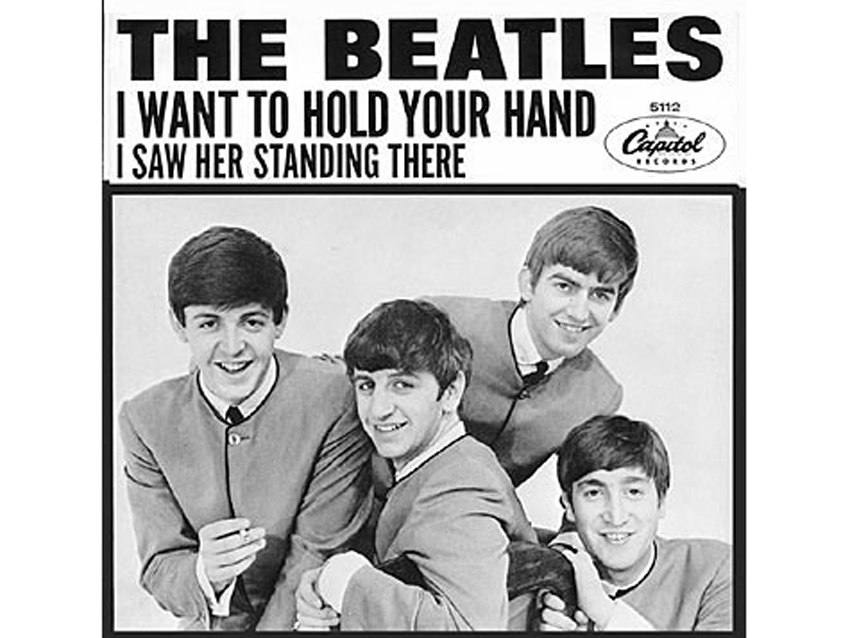
I Want To Hold Your Hand
“I was fortunate to have been there when they wrote it. Paul was going out with my sister, and my parents kind of took pity on him and offered him the guest room in our house as a sort of pied-à-terre when the band wasn’t on the road. So Paul and I were sharing the top floor in our house for a couple of years, whenever The Beatles weren’t touring.
“In the basement of the house, there was a little music room where my mother used to give private oboe lessons whenever she wasn’t teaching at the Royal Academy Of Music up the road. It was a little room with an upright piano, a sofa and a music stand. When my mother wasn’t using it, Paul would sometimes go down there to write.
“There was a particular occasion when John came over. This was early on, when Paul had just moved in, when the two of them were writing more actively, physically together. They were down there a while, maybe an hour or so, and then Paul came upstairs, stuck his head in and asked if I wanted to come and hear something they’d just written. I went downstairs and sat on the sofa while they sat side-by-side on the piano bench – interestingly, no guitars – and played me I Want To Hold Your Hand.
“They asked me what I thought – as you can imagine, it made quite an impression. I could tell it was something very special. One of the characteristics of a hit is that you immediately want to hear it again, which was indeed my reaction: ‘Oh, my God! Can you play that again?’
“I don’t want to sound too pretentious about it, because it is only a three-minute pop song, but there is a certain epiphany in thinking that you’re present at the moment of creation of great art. You kind of go, ‘Am I losing my mind, or is this the greatest song I ever heard in my life?’”
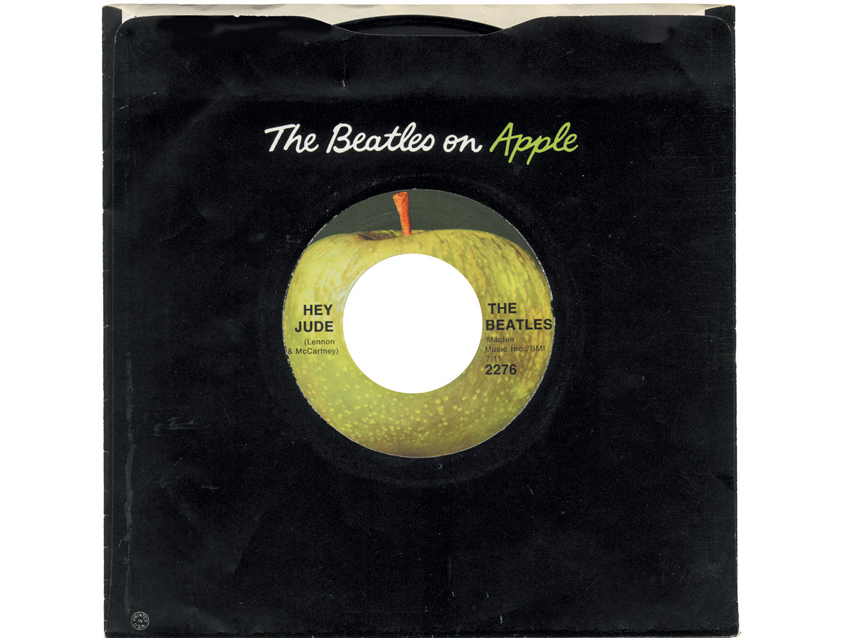
Hey Jude
“I wasn’t there while they were making it, but I heard it when it was finished. It was the first record the band did at Trident Studios and the first record they did in eight-track. The reason for that was, I had just finished recording the James Taylor Apple album there, and Paul had come in and played bass on Carolina In My Mind for me.
“This was the first time that Paul had seen an eight-track machine. As it turned out, EMI actually had a couple of them, but they were putting them through a rigorous testing and rebuilding process. They were like the BBC, with all of these technical standards, whereas the indie studios like Trident would just buy something and plug it in.
“So Paul had seen the joys of eight-track, and he then brought The Beatles to Trident to do Hey Jude. They had these big Tannoy monitors, which were kind of hype-y – they weren’t really the best things to mix on, but they were loud – and that’s what I heard Hey Jude on, these big old speakers. It was loud… and astonishing.
“The first time you hear it, you don’t know what to expect. There’s that whole end section lurking ‘round the corner, completely unknown to you. But then when it happens, it’s breathtaking.
“It’s a long song, and I do remember thinking, ‘Can they really do that? Can you make a single that long?’ Because we had been conditioned as Buddy Holly fans to think of singles as two or three minutes. That’s what his records were, and they were brilliant. To be that long and that complicated with Hey Jude, I thought it was wonderful, and I was super-impressed. The thought did cross my mind: ‘This is probably against the rules.’ But that’s one of the things The Beatles did so well: As songwriters, they broke the rules in a human and gentle way – and got away with it.”
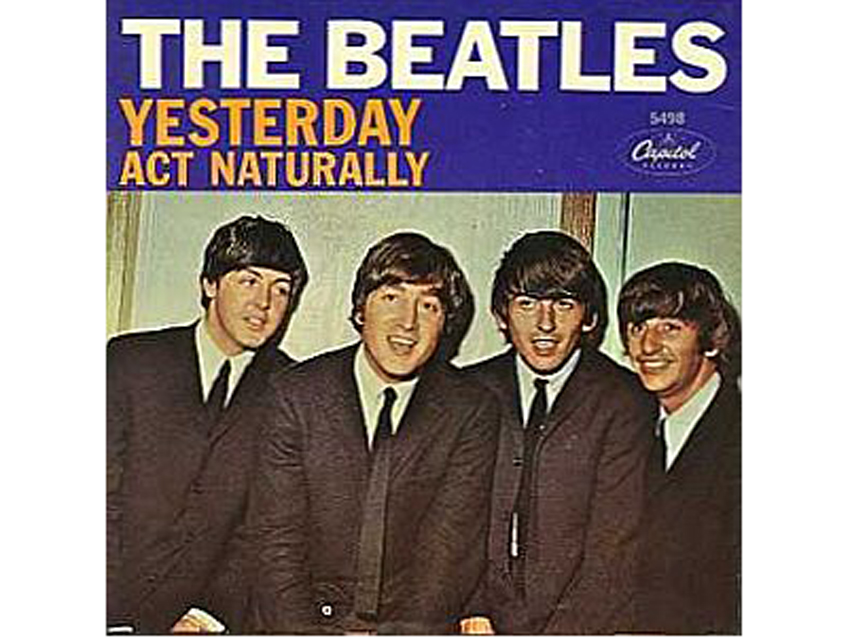
Yesterday
“Simply because it is one of the best songs ever written. Everybody knows the story about Paul waking up and thinking that the melody was something that somebody else had already written. That was in our house. I wasn’t there that day, but I think he played it for my mother and asked her if she knew what it was.
“He didn’t have the words at first, but there was the melody. I’d never heard it when it was ‘Scrambled Eggs.’ I never heard him sing it like that, but of course, I do know the story and how the lyrics evolved.
“Paul was being influenced by classical music, which partly might have been from being in our house, where classical music was very much part of the background – my mother being a professional classical musician. But Paul’s father was in a band, and so he knew lots of other instruments, not just guitars.
“The temptation would have been to schmaltz it up with a big orchestra. George Martin was an immense help with the string quartet. But part of Paul’s genius was that, once he understood what a string quartet sounded like and what it could do, he basically wrote those parts. He had a very clear idea of how it should go. It made for a masterpiece of a record in every respect – the arrangement and the production, along with the overall brilliance of the song.”
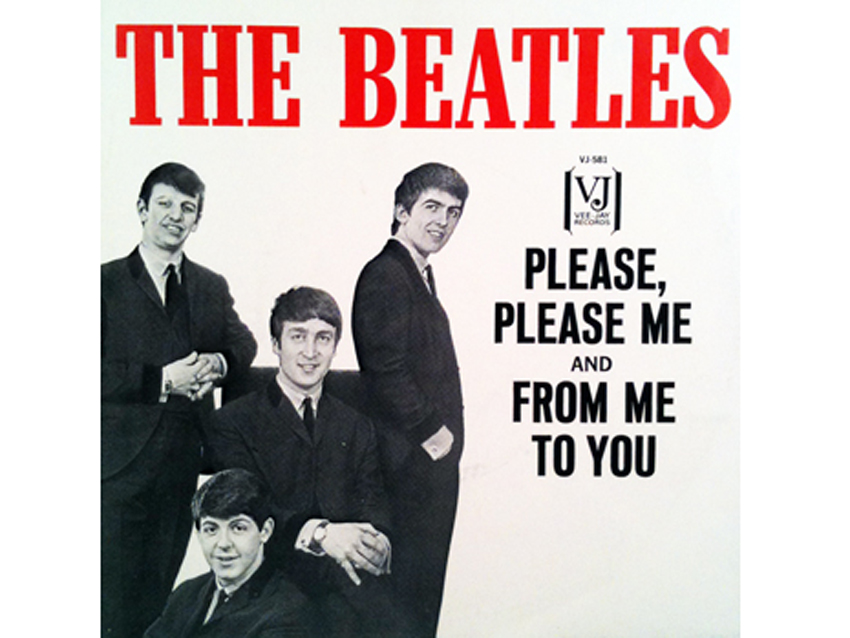
Please Please Me
“It was influenced, I believe, by my favourite Everly Brothers song, Cathy’s Clown. And so, in honor of Phil Everly, who wrote that song, I’m picking Please Please Me.
“The whole idea of the top harmony staying on the one note and the other harmony descending is just brilliant. It worked in Cathy’s Clown, and The Beatles came up with an even better use for it in Please Please Me. They’re totally different songs – The Beatles didn’t copy it – but they took an idea they loved and made a great song out of it.
“It was their first No. 1 in England, but things were already happening very fast even before that. Every day the papers were full of stories about screaming girls everywhere and how fences had to be put up in front of the stage wherever the band played. The Beatles were being chased everywhere they went, all the time. Things were going crazy.”
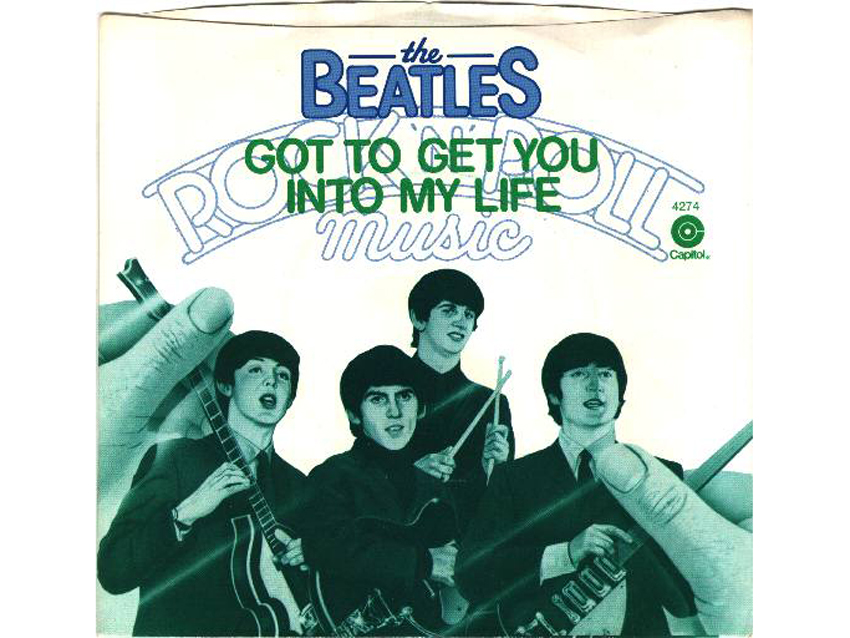
Got To Get You Into My Life
“So many of their songs were thought to be drug songs when they really weren’t. This one is a drug song, but no one knew it. They got away with it completely. It wasn’t until Paul explained it to me – ‘I was alone, I took a ride, I didn’t know what I would find there’ – and that’s when I went, ‘Ohhh.’
“Once you know it, it’s completely obvious; otherwise, it doesn’t make any sense. It might be about a girl or whatever. ‘Got to get you into my life every day’ – all of the fuddy-duddy suspicions were correct. They were encouraging their sons and daughters to smoke dope every day. [Laughs] Not specifically.
“This speaks to The Beatles’ creativity and their deviousness. They wanted to get away with stuff – and they did.”
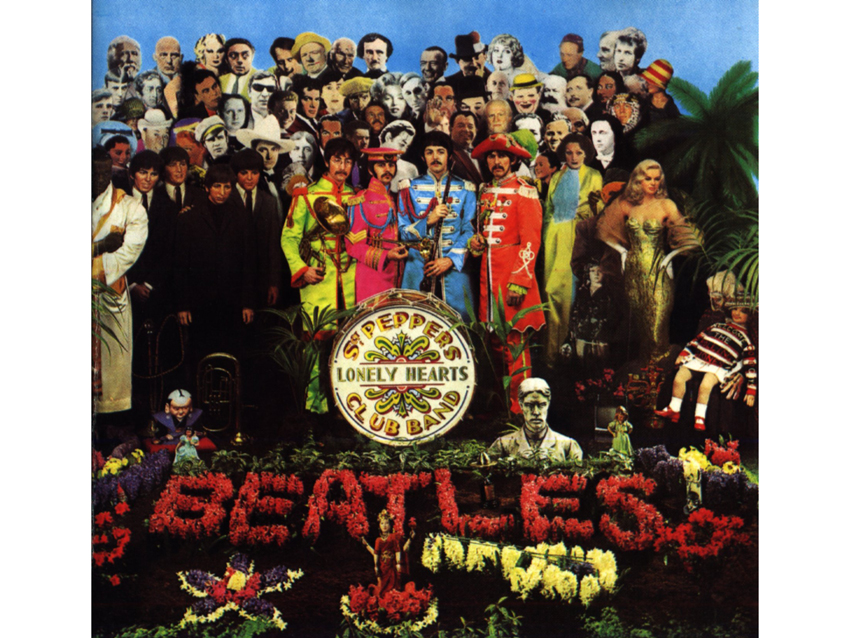
(Bonus pick) Sgt. Pepper's Lonely Hearts Club Band
“I picked this one because it was the start of what an album could be, something we’re losing sight of now. That isn’t necessarily a bad thing, but it’s interesting that we’re back to the way things were before Sgt. Pepper, where the emphasis is on individual tracks and hit singles.
“When Sgt. Pepper came out and you heard the whole thing nonstop, from beginning to end, you realized what this art form, an album, could be. The dimensions of this were purely technical – you had two sides, and you could only fit 20-something minutes per side. It’s as if somebody told you to paint the Sistine Chapel: You might not know its exact dimensions, but somehow you have to follow the rules and make what you’re doing fit. The Beatles came up with a work of art that fit the limitations of the form, but they expanded it and took it somewhere new.
“I remember Paul bringing me an acetate and playing the whole thing. It changed my mind, and I think everybody’s mind, about what an album was and could be. Things like Dark Side Of The Moon owe it that debt, that something can be a great work of art from beginning to end, and story-wise and lyrically it can all be connected as a journey or adventure. It really changed a lot of things.”
Joe is a freelance journalist who has, over the past few decades, interviewed hundreds of guitarists for Guitar World, Guitar Player, MusicRadar and Classic Rock. He is also a former editor of Guitar World, contributing writer for Guitar Aficionado and VP of A&R for Island Records. He’s an enthusiastic guitarist, but he’s nowhere near the likes of the people he interviews. Surprisingly, his skills are more suited to the drums. If you need a drummer for your Beatles tribute band, look him up.
